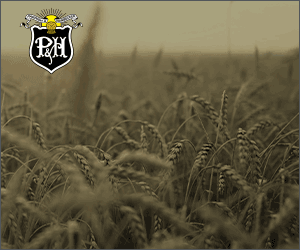In the news
NEWS BITES THAT MATTER
Premier Equipment celebrates new store
On Saturday, June 21, a grand opening event was held to celebrate the new Premier Equipment Ltd. Store in Elmira, Ontario.
The event drew large crowds with people arriving by truck, car, horse-and-buggy, and shuttle services dedicated to the event. True to the theme of the event, “A Celebration of Old and New”, the facility displayed a large antique equipment hall indoors and an array of new machinery outdoors. Kids of all ages were entertained with pedal-tractor races, equipment demos, and lots of socializing and snacks.
The new location is at 275 Church Street West, Elmira, Ontario. For more information, visit www.premierequipment.ca. •
Sudden death syndrome
Albert Tenuta, Field Crop Plant Pathologist, Ontario Ministry of Agriculture, Food and Rural Affairs, says he continues to get asked about an herbicides’, in particular glyphosate’s, impact on plant pathogens and the diseases they produce such as sudden death syndrome.
Sudden death syndrome (SDS) is caused by the fungus Fusarium virguliforme and it is an important yield limiting disease of soybean in southwestern Ontario and the mid-west U.S. There has been considerable debate and some are claiming that glyphosate is responsible for SDS. There has not been a lot of supporting scientific data for this position and the effect of glyphosate application on SDS is not clearly understood. For this reason, a multi-year research project was started with support through the North Central Soybean Research Program (U.S. check-off) and Grain Farmers of Ontario.
Tenuta explains the objective of this study was to examine how glyphosate rates, timing, and number of applications affected SDS severity under field conditions. Fourteen field experiments were conducted in Iowa, Illinois, Wisconsin, Michigan, Indiana, and Ontario (Highgate and Rodney area) the past three years. The researchers tested six treatment combinations of non-glyphosate conventional herbicides and glyphosate including pre- and post- emergence, single and multiple applications.
As expected, disease severity or amount of SDS was significantly different from year to year and between locations. Tenuta and his colleagues found no statistically significant effects on the disease since SDS was not more severe when glyphosate was applied.
Environment plays an important role on disease development and it was not unexpected that their results indicated the environment, particularly soil moisture, played a significant role on SDS development as did soybean cyst nematode infection. The research also demonstrated glyphosate applications did not negatively impact yield across trial locations and years.
Tenuta and his research team will be running this trial again in Ontario this year, but to date, this study has demonstrated that glyphosate application on glyphosate resistant varieties does not increase SDS severity or adversely affect soybean yield under field conditions.
Tenuta reminds soybean producers that pathogen and disease development is primarily driven by the environment and the susceptibility of the crop. He notes you can’t do much on the weather side other than adjust your agricultural practices to make infield conditions less favourable for diseases by tiling to remove water, planting in warmer soils, and scouting. He says the biggest influence though is in hybrid and variety selection. Tenuta recommends you choose your seed wisely and use the best genetics possible with the right disease package for each of your fields. •








